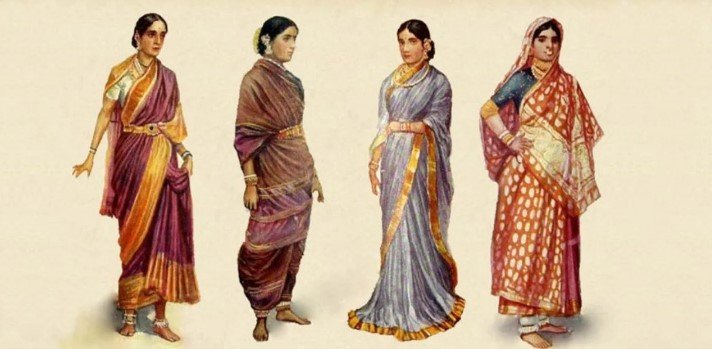The role of women in Indian culture

Indian culture has had a very respectful attitude towards women since the Vedic era. Since ancient times, the value of life of women in India has been considered extremely sacred and sacred. The status of women has been studied in different periods of Indian history, namely Ramayana period, Mahabharata period, Upanishad period, Buddhist period, medieval period and British rule. How were women viewed in different ways in different periods? Who were those women who made a place for themselves in different fields? In this context, the contribution of Brahmavadini Gargi, Rajmahishi Durgavati of Gondwana, Maharani Ahalyabai, Rani Laxmibai of Jhansi and other women is specially mentioned.
A glimpse has been shown from the respectable conditions of Indian women to their struggling life in the present times. It will not only be useful for women experts and intellectuals interested in the study of Indian culture and history, but will also prove helpful in satisfying the curiosity of the common reader.
Women in Indian culture
A noble advice has been given to the woman that she should be as forgiving as the earth, as motionless as the sky, as intelligent as a machine, and the one who brings light to the family. Indian culture is derived from the Vedas. The above statement of Veda regarding women is very meaningful and guiding. Based on the Vedic culture, the status of women in the Vedic era was at its peak in various fields. In ancient times, very noble orders were given towards women in Indian culture. Indian women were entitled to utmost respect. Indian culture is against discrimination between sons and daughters. Rules were laid down to provide the highest education to the young women at par with the young men. For this reason, many Indian women were highly intelligent by virtue of being blessed with extraordinary abilities. He had achieved a commendable position by making India proud through his scholarship and efficiency.
In Indian culture, the life values related to women were considered very sacred and sacred. Therefore, they were considered inviolable. In this context, the situation of Indian women in different eras starting from the Vedic era has been highlighted. Over time, after the attacks of heretics, there is a sense that the condition of Indian women is deteriorating. Culture is the soul of a nation. Therefore, the patterns related to the status of women in Indian culture.
Even today, most of the problems of women are caused by economic dependence. It is extremely worrying that 48 percent of the total population of the country is women, out of which only one third are engaged in employment. For this reason, women’s contribution to India’s GDP is only 18 percent. If discrimination against women inside and outside the family is ended and opportunities are provided to them to participate in the economy on par with men, then other women will also be empowered like Geeta Gopinath, Indra Nooyi, Kiran Mazumdar Shaw.
Present situation of women in India
Even today, most of the problems of women are caused by economic dependence. It is extremely worrying that 48 percent of the total population of the country is women, out of which only one third are engaged in employment. For this reason, women’s contribution to India’s GDP is only 18 percent. If discrimination against women inside and outside the family is eliminated and opportunities are provided to them to participate in the economy on an equal basis with men.
It cannot be denied that in today’s time, women are coming out of the four walls of the house and taking over the reins of power, and not only handling it but also managing it efficiently. For example, Finance Minister Nirmala Sitharaman, President Draupadi Murmu, Mamata Banerjee, Priyanka Gandhi, Smriti Irani, Maneka Gandhi, Mayawati can be seen. But if we look at the population of women in the country, the number of women in politics is still very less. There are only 14 percent women in the Indian Parliament.
At the same time, the number of women in the court is also not satisfactory. You will be surprised to know that only 11 percent of the judges in the High Courts including the Supreme Court of the country are women. The need of the hour is that women should wake up and recognize their potential, break traditional stereotypes and contribute more to the mainstream of the country.
Conclusion-
We can say that since independence, women in India have come a long way in various fields, but are still miles away from the destination. Our speed is very slow with this fast-moving wheel of time, and this speed can be increased only when Indian society rises above the patriarchal mentality and provides equal rights to women as men. Although men and women have been given equal rights in our Constitution, the society here lives according to its own rules.








